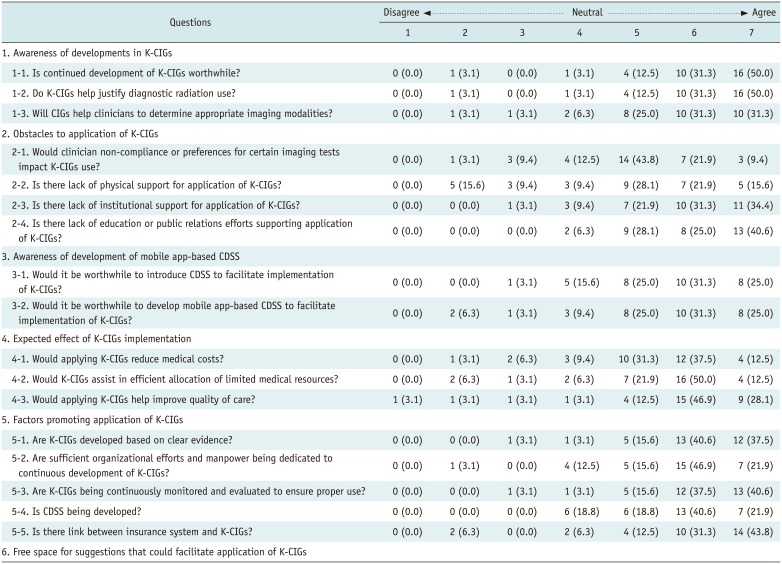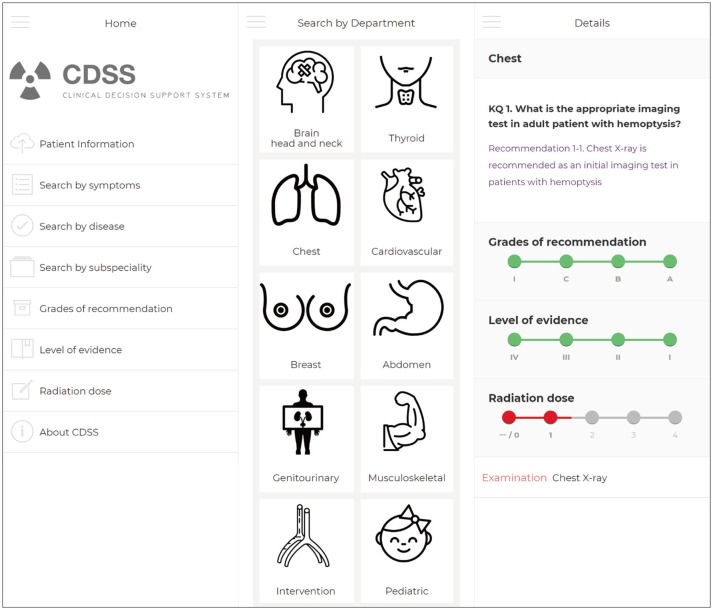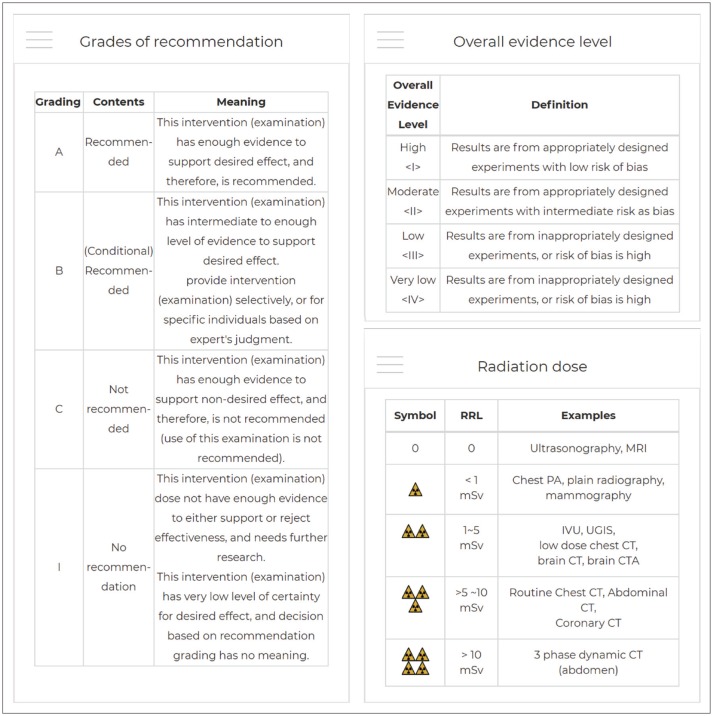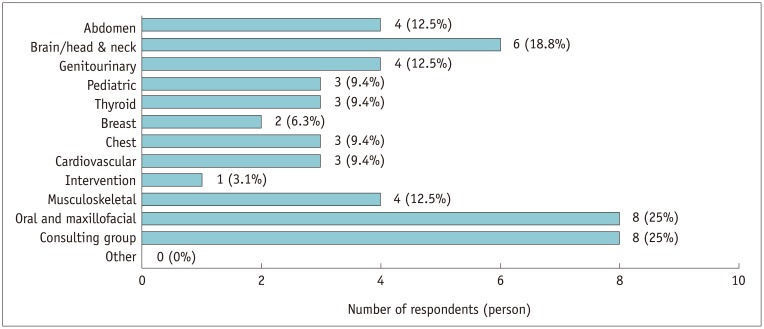1. Sackett DL, Rosenberg WM, Gray JA, Haynes RB, Richardson WS. Evidence based medicine: what it is and what it isn't. BMJ. 1996; 312:71–72. PMID:
8555924.

2. Evidence-Based Medicine Working Group. Evidence-based medicine. A new approach to teaching the practice of medicine. JAMA. 1992; 268:2420–2425. PMID:
1404801.
3. Eddy DM. Practice policies: where do they come from? JAMA. 1990; 263:1265. 1269. 1272. passim. PMID:
2304243.

4. Lim W, Arnold DM, Bachanova V, Haspel RL, Rosovsky RP, Shustov AR, et al. Evidence-based guidelines--An introduction. Hematology Am Soc Hematol Educ Program. 2008; 26–30. PMID:
19074050.

5. Brenner DJ, Hall EJ. Computed tomography--An increasing source of radiation exposure. N Engl J Med. 2007; 357:2277–2284. PMID:
18046031.
6. Sodickson A, Baeyens PF, Andriole KP, Prevedello LM, Nawfel RD, Hanson R, et al. Recurrent CT, cumulative radiation exposure, and associated radiation-induced cancer risks from CT of adults. Radiology. 2009; 251:175–184. PMID:
19332852.

7. Morgan TA, Avrin DE, Carr CD, Dreyer KJ, Flanders AE, Khorasani R, et al. Meaningful use for radiology: current status and future directions. Radiology. 2013; 269:318–321. PMID:
24009350.

8. Malone J, Guleria R, Craven C, Horton P, Järvinen H, Mayo J, et al. Justification of diagnostic medical exposures: some practical issues. Report of an International Atomic Energy Agency Consultation. Br J Radiol. 2012; 85:523–538. PMID:
21343316.

9. Lehnert BE, Bree RL. Analysis of appropriateness of outpatient CT and MRI referred from primary care clinics at an academic medical center: how critical is the need for improved decision support? J Am Coll Radiol. 2010; 7:192–197. PMID:
20193924.

14. Choi MY, Baek JH, Choi SJ, Jo AJ, Choi JA, Jung SE, et al. Development of evidence-based clinical imaging guidelines: to supply the evidence for appropriateness of diagnostic imaging studies and radiation exposure levels of patients. NECA Web site. Accessed July 15, 2018. Published August 31, 2016.
https://www.neca.re.kr/lay1/program/S1T11C145/report/view.do?seq=215.
15. Jung SE, Baek JH, Jeong WK, Yong HS, Choi MY, Ha EJ, et al. 2017 Clinical Imaging Guidelines for Justification of Imaging Study. Cheongju: KCDC;2017.
16. Balasubramanee V, Wimalasena C, Singh R, Pierce M. Twitter bootstrap and AngularJS: frontend frameworks to expedite science gateway development. In : 2013 IEEE International Conference on Cluster Computing (CLUSTER); 2013 September 23-27; Indianapolis, IN, USA.
17. Moroney L. The firebase realtime database. In : Moroney L, editor. The Definitive guide to firebase: build Android apps on Google's mobile platform. Berkeley, CA: Apress;2017. p. 51–71.
18. Ooms J. The jsonlite package: a practical and consistent mapping between JSON data and R objects. Cornell University Library Web site. Accessed March 12, 2014.
https://arxiv.org/abs/1403.2805.
19. Choi SJ, Jeong WK, Jo AJ, Choi JA, Kim MJ, Lee M, et al. Methodology for developing evidence-based clinical imaging guidelines: joint recommendations by Korean Society of Radiology and National Evidence-Based Healthcare Collaborating Agency. Korean J Radiol. 2017; 18:208–216. PMID:
28096730.

20. Cooke R. Utilization management and ACR select. Radiol Manage. 2015; 37:9–12.
21. Huber TC, Krishnaraj A, Patrie J, Gaskin CM. Impact of a commercially available clinical decision support program on provider ordering habits. J Am Coll Radiol. 2018; 15:951–957. PMID:
29807818.
22. ESR iGuide. Clinical Decision Support using European Imaging Referral Guidelines. European Society of Radiology Web site. Accessed July 15, 2018.
https://www.myesr.org/esriguide.
23. Remedios D, Hierath M, Ashford N, Cavanagh P, Grenier PA, Lloyd CM, et al. European survey on imaging referral guidelines. Insights Imaging. 2014; 5:15–23. PMID:
24338617.

24. Rosenthal DI, Weilburg JB, Schultz T, Miller JC, Nixon V, Dreyer KJ, et al. Radiology order entry with decision support: initial clinical experience. J Am Coll Radiol. 2006; 3:799–806. PMID:
17412171.

25. Berner ES. Clinical decision support systems: theory and practice. 2nd ed. Birmingham, AL: Springer;2006. p. 3–43.







 PDF
PDF ePub
ePub Citation
Citation Print
Print




 XML Download
XML Download